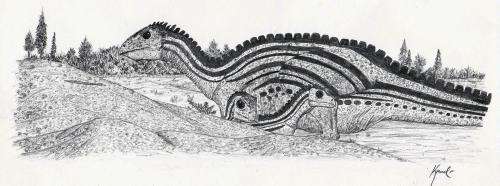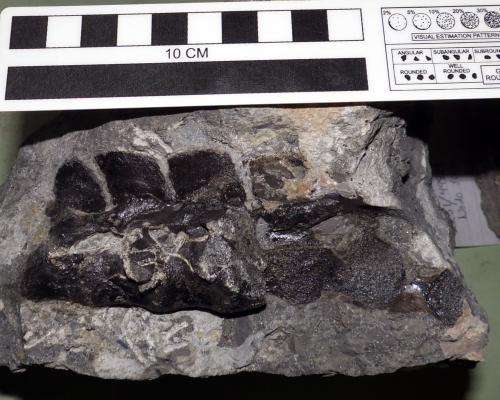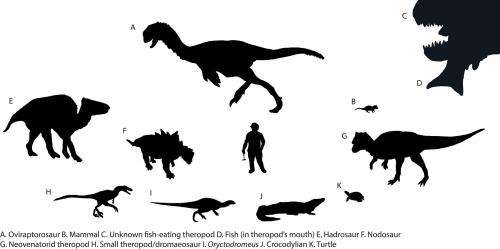Paleontologists discover the most diverse dinosaur fossil site yet found in Idaho

(Phys.org) —A Montana State University graduate student and MSU paleontologist David Varricchio are part of a research team that discovered the most productive and diverse dinosaur fossil site known in Idaho.
MSU doctoral student and lead presenter L.J. Krumenacker explained their discoveries on Tuesday, May 20, in Bozeman at meetings of the Rocky Mountain and Cordilleran sections of the Geological Society of America. Hosted by the MSU Department of Earth Sciences, the meetings were held May 19 through 21 at MSU.
"This site has easily produced more dinosaur and other terrestrial Cretaceous fossils than any other fossil site known in Idaho," Krumenacker said. "Dinosaur fossils are very rare in Idaho, but this site has produced over 100 fossils and has the potential to produce hundreds more. We have just scratched the surface of what is at the site. Collecting and processing new fossils will be a multi-year effort."
Krumenacker said he and now retired Caribou-Targhee National Forest paleontologist Steve Robison first recognized the potential for fossils at the site in 2003, but they didn't realize the diversity and abundance of the fossils until a 2013 construction project removed some of the rocks. Dubbed "The Robison Bonebed" in honor of Robison's contributions to Idaho paleontology, the site occurs in the Wayan Formation (roughly 98 million years old) in Bonneville County, Idaho.

The bones and teeth they discovered represent several dinosaur types previously unknown from Idaho, Krumenacker said. The fossils include a vertebra from a carnivorous theropod possibly similar to Siats, recently described from Utah; a tooth from a plant-eating hadrosaur, the first evidence for this type of animal in Idaho; and teeth from a mysterious larger carnivorous theropod that may have been a fish eater.
Other fossils found include abundant bones and teeth from the small burrowing dinosaur Oryctodromeus, armored nodosaurs, small theropods that may be dromaeosaurs, and eggshell from a large oviraptorosaur similar to Gigantoraptor, Krumenacker said. The paleontologists also found the teeth and jaws of mammals, almost unknown in Idaho, as well as fossil fragments from turtles, crocodylians, and fish.
Fossils at the site are in large boulders and blocks of rock, so the rock needs to be broken and washed to reveal the fossils, Krumenacker said. Once the fossils are found, they will be removed from the rock in an MSU laboratory. The fossils will be curated in the John A White Paleontological Repository at the Idaho Museum of Natural History.

"Fossils from this site will help us better understand the relationship of the Idaho fauna to other faunas from the western U.S. of similar ages," Krumenacker said. "They will also help us understand how the composition of animal faunas at this time were changing. This is an important and poorly understood time in dinosaur evolution."
The Idaho fossils were collected under a permit issued by Caribou-Targhee National Forest, a requirement for all vertebrate fossils found on federal lands.
Provided by Montana State University

















